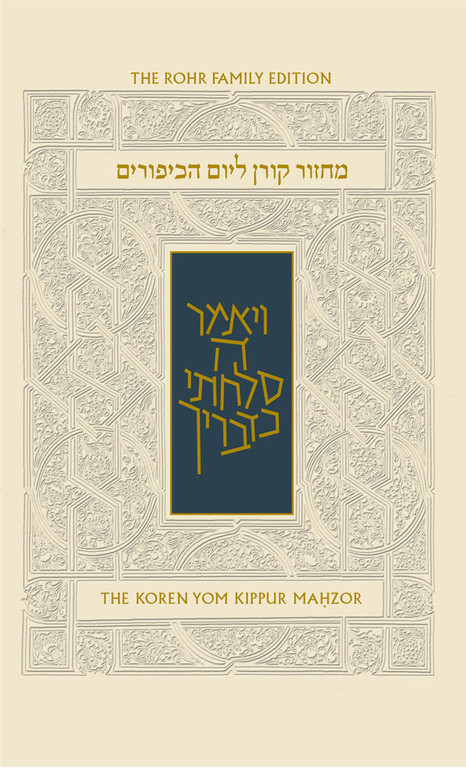The Kosher Bookworm: Yom Kippur readings for your inspiration
Perhaps it was Rabbi Shmuel Hain who said it best:
“We can now fully appreciate the unique theme of the days between Rosh Hashana and Yom Kippur and how they function as a bridge between the two. The focus of these days is not on the ultimate goal of wiping clean one’s slate of sins; if that were the case, we would be permitted to use any method or device to realize that objective. Instead of being goal-oriented, these days are to be viewed as an opportunity to undergo the process of transforming one’s religious personality. Following on the heels of Rosh Hashana when the shofar’s call awakens us to change our ways and to repent, the days of Repentance are intended to facilitate this process of change. These days are not merely a grace period to add merits before we request, and hopefully receive, atonement on Yom Kippur. Rather, the inspiration and anxiety experienced on Rosh Hashana should be channeled towards comprehensively evaluating one’s character and carving out a new, revitalized religious persona. The climax of this process is Yom Kippur, when we can justifiably beseech G-d to grant atonement for our sins after having carried out this transformation of self. In a word, the emphasis of Aseret Yemei Teshiva is not forgiveness, but the process of repentance.”
The focus of this week’s essay will be a series of brief reviews of several works, for your spiritual and personal enrichment. While reading this, please keep Rabbi Hain’s teachings in mind.
First and foremost is the recognition that the primary book for this holiday is the machzor, the prayer book for this sacred day.
This year we witnessed the publication of the Koren Yom Kippur Machzor with translation and commentary by Rabbi Jonathan Sacks, whose previous liturgical works have been the focus of numerous reviews.
Also, and most note worthy, within this work is an extensive translation and commentary of the Mishne Mesechet Yoma, This 186 page work of towering scholarship was written and compiled by Rabbi David Fuchs, a musmach of the Israeli Chief Rabbinate and a product of the learning and teachings of Yeshivat Har Etzion. Since completing his studies at Har Etzion, Rabbi Fuchs became editor of Hebrew liturgical texts at Koren, eventually working on the projected mishna series for the machzorim for all the Jewish holidays. It is this writer’s wish to witness, in the very near future, the development of a whole new series of The Koren Mishna with English translation and commentary by Rabbi David Fuchs, as a logical Israeli successor to the Kahati series of the previous century.
The text translation of the mishna was written by Jessica Sacks, one of Israel’s most skilled translator’s of Jewish liturgy, into a most readable and comprehensible English, something that has long been overdue for English fluent learners of Talmudic studies.
Also in this work, is a 65 page introduction to the machzor by Rabbi Sacks, that eloquently touches upon almost every major theme of Yom Kippur.
AND THERE IS MORE…….
Two excellent and eloquent supplemental works also have appeared new for this year.
First we have “Twerski on Machzor: Yom Kippur” [Artscroll, 2012] by Rabbi Dr. Abraham Twerski and “The Yom Kippur Prayers” by Rabbi Yitzchok Sender. Both contain a series of extra readings, observations, and commentary on both the themes and liturgy of the day. Dr. Twerski’s work can be purchased at most bookstores, and Rabbi Sender’s work can be obtained from the Sh’or Yoshuv Institute in Lawrence, N.Y. [516-239-9002].
A new anthology, “We Have Sinned: Sin and Confession in Judaism” [Jewish Lights, 2012], also appeared with a rather ideologically eclectic collection of essays reflecting the theologies of numerous American spiritual leaders focusing upon four basic themes. They are sin and confession in Judaism, the Yom Kippur liturgy of confession, Ashamnu and al chet as prayer book editors see them, and interpretations for today of this liturgy. You may not find many of these observations agreeable, but their take is interesting nevertheless.
Finally, a more home based work has just appeared, authored by Rabbi Richard Borah of Hewlett, entitled, “Yad on the Yad: 14 Analyses of Maimonides’ Laws of Repentance.”
Focusing on his take of the Rambam’s Hilchot Teshuva, Rabbi Borah contrasts in detail Rambam’s views on this timely topic together with the rich insights of Rabbi Joseph B. Soloveitchik, as well as others.
This tightly written work is cerebral and challenging. I highly recommend this book for oneself as a special spiritual treat for this time of the year.
Also, Rabbi Borah, a musmach of Rabbi Yisrael Chait, has a blog entitled, “Rambam and the Rav on the Parsha” that is worthy of note. He can be reached at: rambamrav@gmail.com
ONE FINAL OBSERVATION……
Our liturgy is made most memorable, especially at this time of year, through the music and song utilized throughout the holiday observance. Some time ago, an interesting article was brought to my attention, written by Rabbi Levi Cooper of Jerusalem’s Pardes Institute entitled “The Cantorial Performance,” published by The Lookstein Center. It can be found in their journal, Jewish Educational Leadership.
This article warrants your attention inasmuch as it describes in a rather detailed manner the role that Jewish liturgical music, specifically chazanus, plays in our religious faith and related culture. Many of the personalities cited in this essay might be familiar to many of you, and many might not be. However,if you are daring enough and have the time, I urge you to check it out.
In the meantime, may I extend to all my dear readers a Gmar Chatima Tova, and an easy and meaningful fast.

 55.0°,
Mostly Cloudy
55.0°,
Mostly Cloudy 




